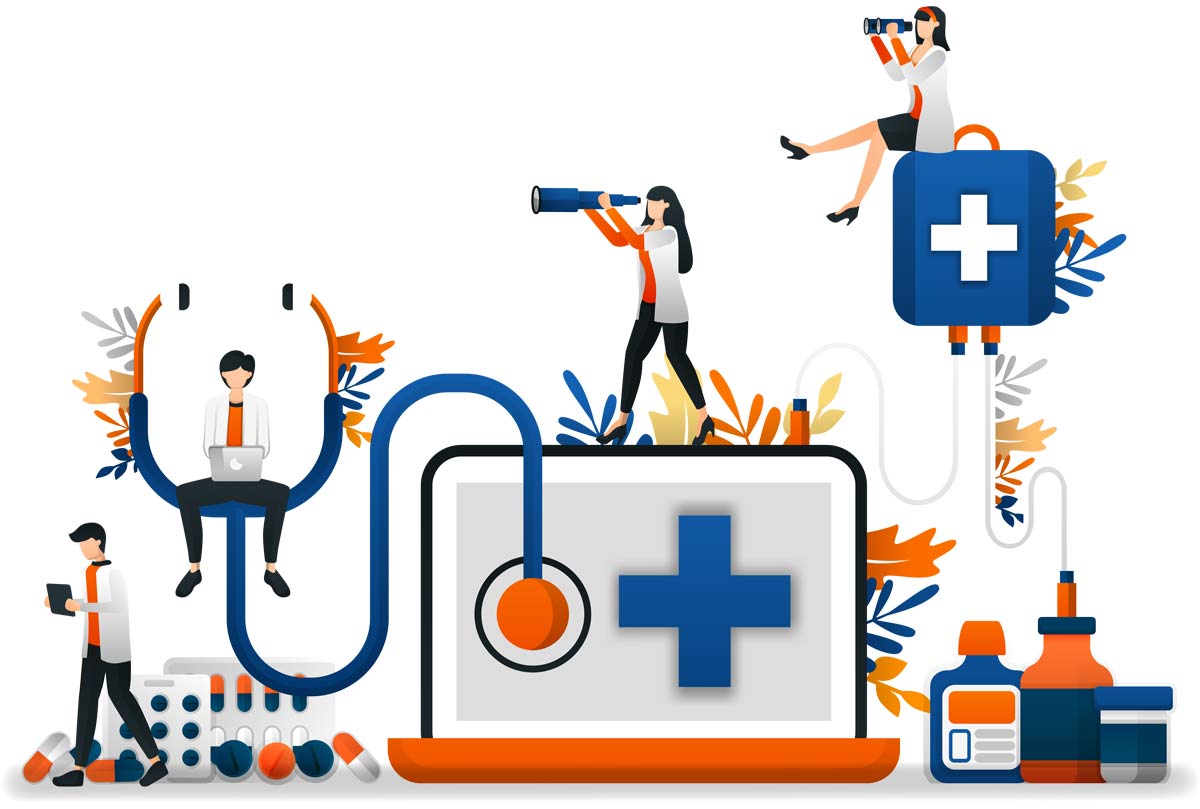Key Takeaway
The Infrastructure Bill passed by Congress and signed into law by the President and the Build Back Better Reconciliation Bill – pending passage – represents an opportunity for hospitals, nursing homes and community healthcare providers to implement digital health plans. Appropriately designed, a comprehensive Digital Health Program (DHP) can improve clinical workforce productivity and retention, increase network optimization for competitive advantage, enhance patient/consumer access and satisfaction, improve return on capital investments and lower operating costs.
Background
Definition: “Digital Health is a disruptive and transformational approach to the delivery of healthcare, with a focus on engaging and empowering patients, activating caregiver networks and understanding that patients are increasingly behaving as consumers of healthcare.” (Semantic Consulting)

A comprehensive DHP requires capabilities in four areas:
1. Platform Solutions
Disease-specific care platforms that enable connectivity and shared-care management responsibility between patients and providers (i.e. Virat, Maven, Cove, Liberate, Headspace, Lemonaid, Teladoc-Livongo, Omada, HIMS et al). Note: mental health is the clinical focus in which telemedicine is most widely embedded currently.
2. Digital Therapeutics
Digital therapeutics (DTx) and digital care (DC) products and tools — which incorporate software to treat, prevent or manage specific diseases or conditions: more than 250 such products are now available (i.e., deprexis for depression, parallel for IBS, NUE Life Health et al)
3. Internet of Things – IoT (physical objects with sensors and other software that communicate with other devices and systems over the Internet)
Speech-assisting technology, assisted living technology, rehabilitation and disability-assisting technology, and chronic disease monitoring technology.
4. Machine Learning (ML) & Artificial Intelligence (AI)
Customized treatment and cancer diagnosis, virtual assistants for nursing, chatbot technology enabled by AI, AI-powered radiology assistance and diagnosis, Alternative Reality (AR)/Virtual Reality (VR) headsets used with patients with cognitive impairment/dementia et al.
Key Trends
The following five trends are prompting healthcare providers’ attention to digital health:
1. Digital capabilities have become mainstream to health delivery
From 2020 to 2021, wearable technology increased from 18% to 20%, virtual consultations increased from 7% to 32%, remote patient monitoring increased from 3% to 10%, and digital therapeutics increased from 3% to 10% (2021 Accenture Health and Life Sciences Experience Survey – US findings).
2. Televisits for routine care and mental health have grown consistently
Telehealth utilization is currently 38X higher than pre-pandemic. Televisits grew from 4.1 million in March 2020 to 12.7 million in April 2020, then declined through September 2020, and rebounded up to 8.8 million in December 2020. 4.6 million of the encounters in December 2020 were behavioral and mental health telehealth claims (Mayo Clinic and MITRE Corporation).

3. Health regulators’ support of digital capability expansion is strong and increasing
On October 15, HHS announced the renewal of the Public Health Emergency (PHE) through January 15, 2022 which sustains temporary allowance for telehealth. Several federal laws are pending: the Telehealth Healthcare Access Act of 2021, the Telehealth Modernization Act and the Connect for Care Act that enhance access to telehealth in rural, FQHC and other care settings. State laws vary: 49 allow or encourage the use of telehealth in Medicaid and reimbursement, and access stipulations vary widely. As of November 2021, 19 states have implemented policies requiring payment parity, 5 states have payment parity in place with caveats, and 26 states have no payment parity (Center for Connected Health, Beazley).
4. Public and private funding for digital investments is accessible
The Infrastructure Bill includes $65 billion for broadband access expansion in underserved communities and FCC has awarded $42 million for its Pandemic Telehealth Program. Private investments in digital health hit a record $8.5 Billion in 3Q 2021 and 33 of the 75 unicorns that debuted thus far in 2021 are digital platforms (i.e., City Block, Carbon Reify, et al.) (Pitchbook 3rd Quarter 2021).
5. Consumers embrace digital tools
80% of those who have used televisits were satisfied and intend to continue. Growing numbers of consumers are using technology to monitor their health, measure fitness, and order prescription-drug refills. After a slight decline in willingness to share data before COVID-19, consumer willingness to sharing data with their providers via digital platforms increased. But only 11% of consumers say providers use digital tools effectively (Deloitte Center for Health Solutions 2020 Consumer Survey, 2020 Accenture Digital Health Consumer Survey).
ERDMAN's Perspective
A comprehensive DHP is essential to post-pandemic competitive positioning for provider organizations. It cannot be treated as a peripheral consideration in planning. Enhancements in four major areas can be achieved with an appropriately designed DHP:
Clinical workforce productivity and retention: Leveraging digital connectivity and care coordination appropriately optimizes interactions with patients and peers.
Network Optimization: A DHP plan defines the ideal configuration of facilities and virtual network capabilities to elevate access and competitive positioning.
Patient/consumer access and satisfaction: A DHP enhances connectivity with patients (consumers) to improve outcomes and encourage technology-enabled self-care management.
Return on capital investment: A comprehensive DHP streamlines administrative and clinical functions and associated costs through digital solutions.
For more information about ERDMAN’s DHP Planning Process, please contact the ERDMAN Advisory Services team.



